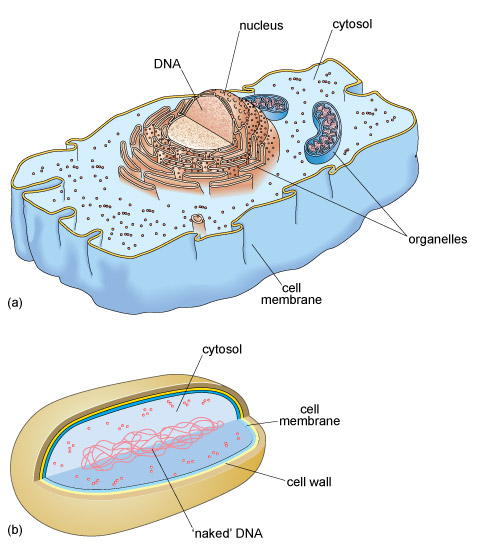3.2 Cells and their relationship to pathogens
Parasites, protists, fungi and bacteria are composed of cells – the basic unit from which the bodies of living organisms are constructed. Parasites and other animals (including humans) and plants are multicellular, i.e. their bodies consist of many cells. Pathogenic protists and bacteria are single-celled organisms. Fungi can exist in single-celled and multicellular forms, and some fungal cells can merge to form long filaments.
Bacterial cells are different in several respects from the cells of all other organisms. Figure 1a is a highly simplified diagram of an animal cell and Figure 1b represents a typical bacterium.

There are many similarities between animal and bacterial cells: for example, they both have a cell membrane, a complex structure that controls the passage of substances into and out of the cell. Around 70% of the internal contents of both cell types is a watery fluid called cytosol [sigh-toh-soll], in which many chemical reactions take place.
The cytosol of animal, plant, protist and fungal cells contains many different structures, collectively called organelles [or-gan-ellz]. The largest single organelle is the nucleus [nyook-lee-uss] enclosing the genetic material (DNA) that governs the functioning of the cell.
How does the description of an animal cell that you have just read differ from what you can see of the bacterium from the diagram in Figure 1b?
The bacterial cell doesn’t contain any organelles and its DNA is ‘naked’ in the cytosol, not enclosed in a nucleus. Note that bacteria also have an additional protective layer (the cell wall) outside the cell membrane, surrounded by a slimy coating.
Next, we briefly explain how all living organisms, including bacteria, are distinguished from each other by unique scientific names.
